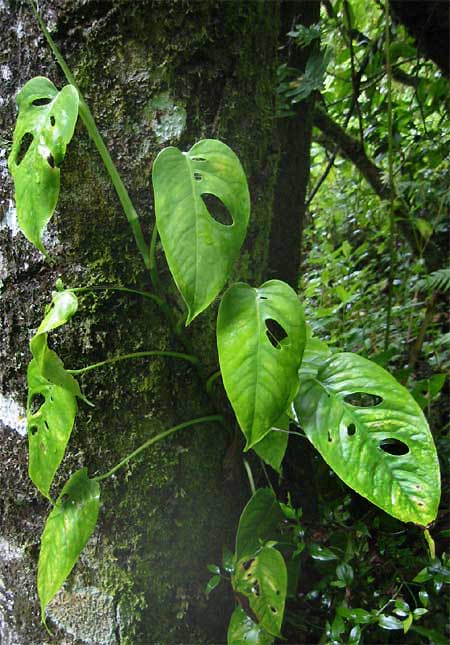Excerpts from Jim Conrad's
Naturalist Newsletter
from the January 28, 2007 Newsletter issued from Yerba Buena Clinic just outside Pueblo Nuevo Solistahuacan, Chiapas, MÉXICO
about 1740 meters in elevation, ± LAT. 17° 11' 27"N, LONG. -92° 53' 35"W
MONSTERAS

Above you see a climbing plant very common both in the Sweetgum-oak-pine forest I live in and the cloudforest along the ridgetop.
This is obviously an "aroid," or member of the Arum or Jack-in-the-pulpit Family, the Araceae. This is another huge family in which we find such well-known ornamentals as philodendrons, anthuriums, caladiums, Elephant's Ears, and Taro with its edible tubers. Like the Orchid Family, the Arum Family has many of its own peculiarities, and also here one is happy when an easy-to-see feature can be used in identification.
The climbing plant in the picture is a monstera, genus Monstera. As a group, monsteras are fairly easy to recognize from other aroids. First of all, many aroid genera exude milky sap when they're injured, but monsteras don't.
Also, if you see an aroid climbing a tree and its leaves have naturally occurring holes in them like those in the photo, usually but not always it's a member of the genus Monstera.
A succulent climber with holey leaves that don't exude milky sap when they're torn -- monstera, probably! As usual, to be absolutely sure you'll need flowers and fruits.
Monsteras are tropical American plants with about 30 species in the genus. Breedlove mentions six species for Chiapas.